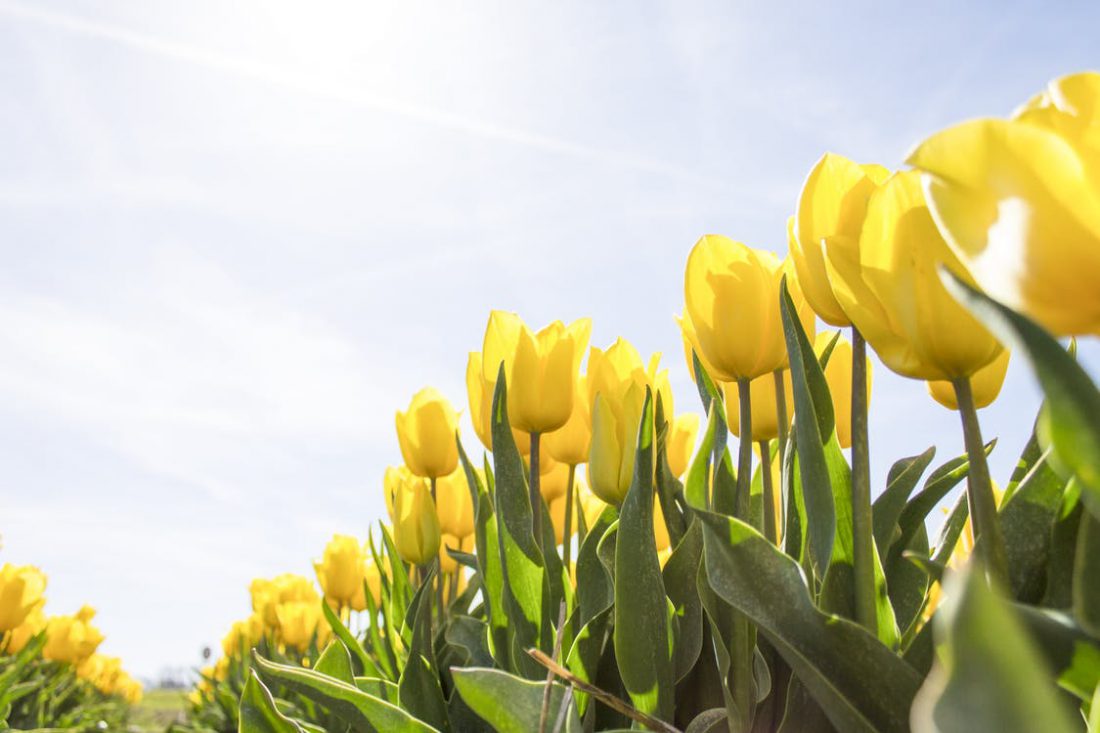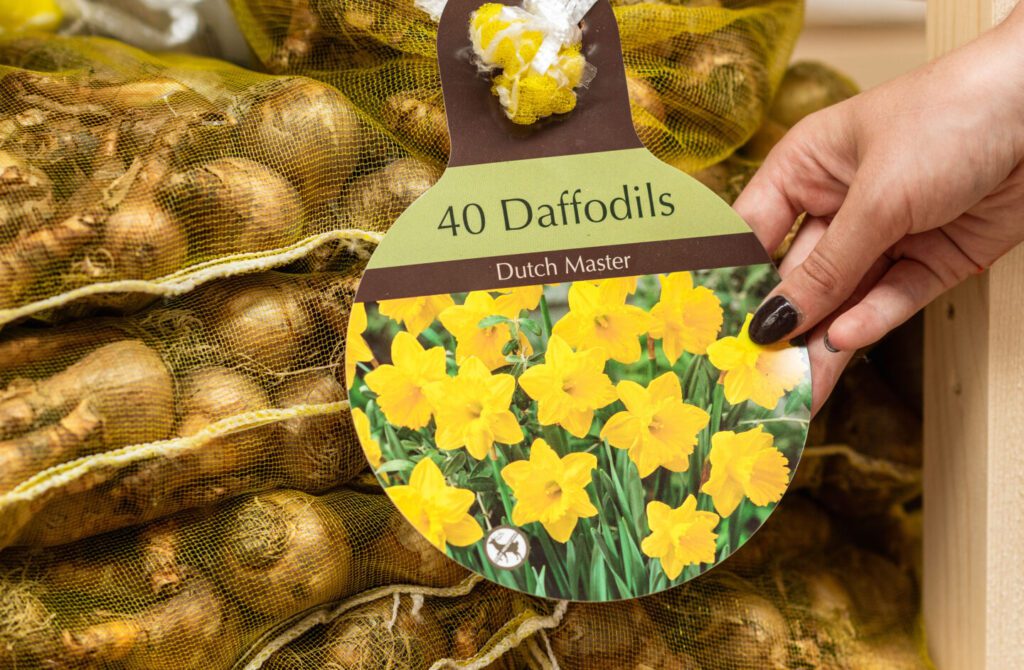September 29, 2017
Spring Flowering Bulb FAQ
Should I apply mulch? How deep? When?
Bulbs don’t require mulch, but it can help to keep the soil moist while maintaining a cool, stable soil temperature. Three inches is plenty (8 cm). Apply when the ground is cool and just before it freezes. If you mulch when the ground is still warm, field mice and other critters might make themselves a warm, winter home and help themselves to some tasty bulb treats.
Should I fertilize bulbs?
Bulbs contain the nutrients they need to bloom their first year, but a fertilizing program will keep plants healthy and ward off diseases and pests. Compost and manure are two good organic fertilizers that improve the soil and ensure a good soil structure for bulbs. Use organic supplements to add nutritional balance. Compound mineral fertilizers can also be applied, but check the label to see if fertilizing is appropriate for your bulbs and the best time of year to do so.
Are there bulbs that scare off mice?
Don’t we wish! While no bulb will ward off mice, voles, moles and other underground pests, there are some easy precautions that can protect your bulbs. One is to plant bulbs deeply enough then cover them properly with soil to deter mice. A second is to create a barrier: simply lay finely meshed netting or chicken wire around the border of the planting then tuck the edges slightly into the soil.
I have seen the same variety of bulb priced very differently, some very cheap and others quite expensive. What’s the difference?
In a word: size. Bulbs from Holland are gauged by “caliber” which is the circumference of the bulb. Since larger bulbs yield larger flowers, they typically cost more. Smaller caliber bulbs are younger and often cost less. For plantings in a front bed or other highly-visible garden setting, it’s worth the higher price for the grander display. If you have a larger area or a portion of yard that’s less visible, smaller caliber bulbs can add color and enliven the scene at lower cost. Left in the ground, these bulbs will naturalize and eventually become bigger bulbs. By the way: the Dutch will not export bulbs below certain established calibers. Tulips, for instance, must be 4 inches (10 cm) or larger without exception. Only naturally sized species tulips fall outside this guideline, but no other tulip bulb smaller than 4 inches (10 cm) will be exported from Holland.

How soon should I plant my bulbs after I buy them?
Typically, it’s best to get them in the ground as soon as possible after bringing them home. If you must wait, store bulbs in a cool, dry place away from direct sunlight. You don’t want to wait too long since bulbs need ample time in autumn to develop roots. So dig and drop six weeks or so prior to hard ground frosts and you’ll be done in plenty of time for spring blooms. Bulbs have one mission in life and that’s to grow, so even if you dig and drop when the ground is already hard and chilled, be sure to water (though not when it will freeze) and bulbs will begin their root growth cycle. They aim to please!
Why are tulips grown in Holland of all places?
Three reasons: the climate, the coast and Carolus Clusius, who introduced tulips to Holland in the 16th century. At the time, the Netherlands was a leading center of trade. As tulip fascination caught on, the Dutch began cultivating them more professionally. Add to this a marine climate (mild winters, cool summers) and a particularly well-suited strip of land just inside the Dutch dunes (proper soil with good drainage, consistent water levels) and the global bulb trade was born. Today, expanses of land in the northern regions of the Netherlands are where the action happens and where the millions of the bulbs we know and love today have their ancestral home.
How do I keep squirrels and deer from digging up my bulbs and destroying my garden?
These furry foragers aren’t so cute after nibbling their way through a bulb garden, are they? Unfortunately, there’s no easy answer to these relentless and challenging pests. While daffodils and other narcissi bulbs taste awful to them, their champagne tastes can wreak havoc on plantings of tulips and crocus. A bottled repellent is a good idea, like Bonide’s Repels-All. A favorite Dutch remedy is to interplant Fritillaria imperialis, a tall, dramatic plant that squirrels (and reportedly deer) think smells like skunky gym socks. One sure-fire line of defense is to lay wire mesh such as chicken wire on top of the bed. Squirrels can’t dig through it and the flowers will find their way through the holes. A starving deer will eat just about anything, and the loosened soil after planting in autumn makes bulbs particularly vulnerable to industrious squirrels. So don’t advertise your plantings by leaving debris like papery bulb tunics or scented bits from the bulb bags at the site.
Can I plant flower bulbs amongst trees and shrubs?
Trees, shrubs and bulbs are all competing for nutrients in the soil, so flower bulbs planted in these locations need to be able to hold their own. It can be a good idea to choose early-flowering bulbs for these sites since they’ll stand out among the still bare woody plants. A mixture of at least six varieties of naturalizing bulbs that flower at successive times is perfect here. Plant them in variously sized clusters in the lightest spots in a wooded area, or along the edge of a wood. You’ll enjoy years of flowering that becomes increasingly profuse year after year.
Should tulips be deadheaded once the flowers start to fade?
“Deadheading,” a term for breaking off flowers from their stem, has many positive benefits for tulips planted for multiple-year flowering. Deadheading once flowers start to fade prevents the development of seedpods, a process that diverts energy from producing new bulbs to producing seeds. It also prevents petals from falling into the leaf axils and allowing certain fungal diseases (Botrytis) to develop.
What should I do after tulips fade in spring? What about daffodils?
You can leave daffodils (narcissi) as they are, but tulips should be dead-headed after flowers have faded. Simply clip off the faded bloom so they won’t go to seed. Resist the temptation to bunch, tie, braid or cut the leaves as the plant dies back. Photosynthesis is turning the sun’s energy into food and “recharging” the bulb for next spring. You can remove them once the leaves turns brown or six weeks after flowering. In the meantime, you can camouflage fading foilage by interplanting annuals or perennials. Leave room in the bed for these by planting bulbs in large clumps rather than full beds.
Can you plant bulbs in any kind of garden and in every type of soil?
So long as the soil drains well, bulbs will thrive. Which means you should avoid planting them in hollows or low spots or under drain spouts, where water collects or puddles. In soggy soil, most bulbs will rot. Exceptions include echequered fritillary (Fritillaria meleagris), camassia and leucojum.
Why are my daffodils blooming so much later this year than they did the first?
Naturalized bulbs tend to bloom about two weeks later in subsequent years than they did their first year. So keep that in mind when choosing bulbs for “color combos.” If you want to coordinate spring blooms or add new bulbs to an existing planting, don’t forget to factor in the later bloom time.
What’s naturalizing about?
For bulbs indicated as naturalizing bulbs, it simply means that they’re most likely to come up and flower again in future years. Successful naturalizing depends on soil composition, pH levels and drainage. And, of course, the bulb’s specific growing needs. Keep in mind that after bulbs bloom in spring, wait a month or two to allow them to die back completely. This gives the plant the energy it needs to recharge for next year’s bloom.
Why don’t spring flowering bulbs in the ground freeze in the winter?
Mother Nature works in marvelous ways and designed spring-flowering bulbs to withstand winter’s cold. While the soil itself may freeze beyond the planting depth of the bulb, soil temperatures rarely fall below 29º F/-2ºC or 30º/-1ºC F. While these temperatures might freeze the water in the bulbs, it doesn’t harm the actual cells in the bulb. In fact, the cells undergo a biochemical process that insulates the bulb to keep it safe and snug. Also, in the same way humans can stay warm in a “snow cave,” the snow cover, along with a nice layer of mulch over the bulb bed, helps insulate the soil.
How deep do I plant flower bulbs?
In general, plant 3x as deep as the bulb is long (measured from the base of the bulb). Typically 8 inches (20 cm) for big bulbs such as daffodils, tulips and hyacinths and 5 inches (13 cm) for small bulbs like grape hyacinths and crocus. Plant in well-drained soil, cover up, water well and wait for spring. It’s as simple as dig, drop, done! For specific directions on individual varieties, check the packaging the bulbs came in. For some more info, check out this great infographic!
If bulbs sprout early during a mid-winter thaw, do I need to protect them? Will the next freeze kill the flowers?
Probably not. Although a hard frost may blight the buds or burn the tips of the leaves, they should still flower. Healthy spring-flowering bulbs know what they can be in for, and a return of extreme cold or even snow doesn’t keep them from doing what’s in their nature.
Now that you’re an expert, why not come and check out our stock of bulbs at any of our 7 locations, or our online store?


